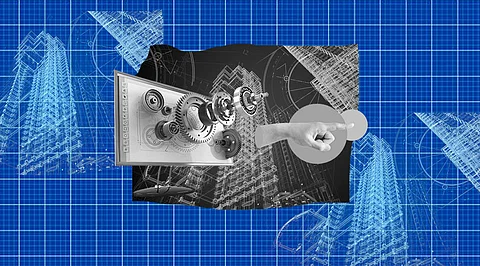


Accurate annotations have been provided by computer vision datasets, which are the foundation for many Artificial Intelligence (AI) models, for many years. They have performed admirably enough to satisfy the demands of machine perception systems. However, AI has reached a stage where it required precise outputs from computer vision models in order to enable delicate human-machine interaction and immersive virtual existence. Image segmentation, one of the most fundamental computer vision algorithms, is crucial for assisting robots in understanding and perceiving their environment.
It can provide more accurate descriptions of the objectives than picture classification and object identification for a variety of applications, such as image editing, augmented reality (AR), medical image processing, 3D reconstruction, satellite image analysis, and robot manipulation. We can categorize the aforementioned applications into "light" and "heavy" categories based on how directly they affect actual objects. Examples of "light" applications are image analysis and photo editing (like manufacturing and surgical robots).
The "light" applications may be more tolerant of segmentation failures and deflect because these issues largely raise labor and time costs, which is usually acceptable. Deflects or failures in "heavy" applications, however, are more likely to have catastrophic effects, such as physical damage to items or injuries that could be fatal to humans and other animals. Therefore, the models for these applications need to be precise and trustworthy. Most segmentation algorithms are still less suitable in such "heavy" applications due to accuracy and robustness, which hinders segmentation methods from playing more important roles in larger applications.
Dichotomous image segmentation (DIS), as it is known by researchers, is the process of trying to distinguish exceedingly exact objects from images of nature. They strive to provide a framework that can handle both "heavy" and "light" applications. However, the main focus of current picture segmentation problems is on segmenting objects with specified characteristics, such as visible, veiled, detailed, or specific categories. Basically, all jobs depend on the dataset because the majority of them use the same input/output formats and hardly ever use exclusive strategies explicitly developed for segmenting targets in their algorithms.
The recommended DIS task frequently emphasizes images with one or more objectives, in contrast to semantic segmentation. It is simpler to get more detailed, accurate information on each target. Therefore, the creation of a category-neutral DIS task for accurately segmenting objects of varying structural complexity, regardless of their attributes, is highly encouraging.
1. In DIS5K, a sizable, extensible DIS dataset, 5,470 high-resolution images, and accurate binary segmentation masks are merged.
2. By mandating direct feature synchronization, IS-Net, a unique starting point created with intermediate supervision, prevents over-fitting in high-dimensional feature spaces.
3. A recently created human correction efforts (HCE) statistic tracks the number of human interventions necessary to rectify the incorrect locations.
4. The most thorough DIS analysis is provided by the DIS benchmark, which is based on the most recent DIS5K.
